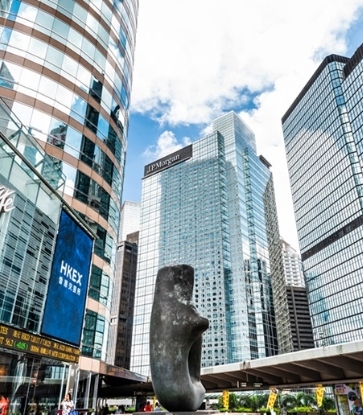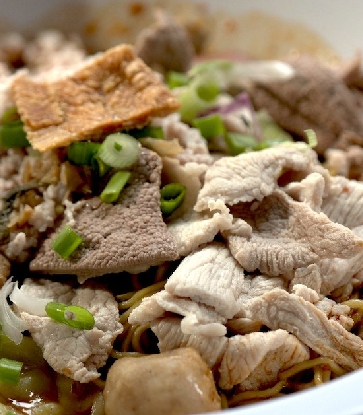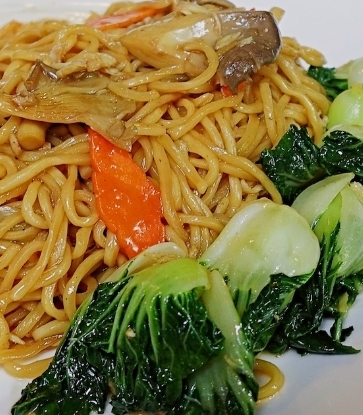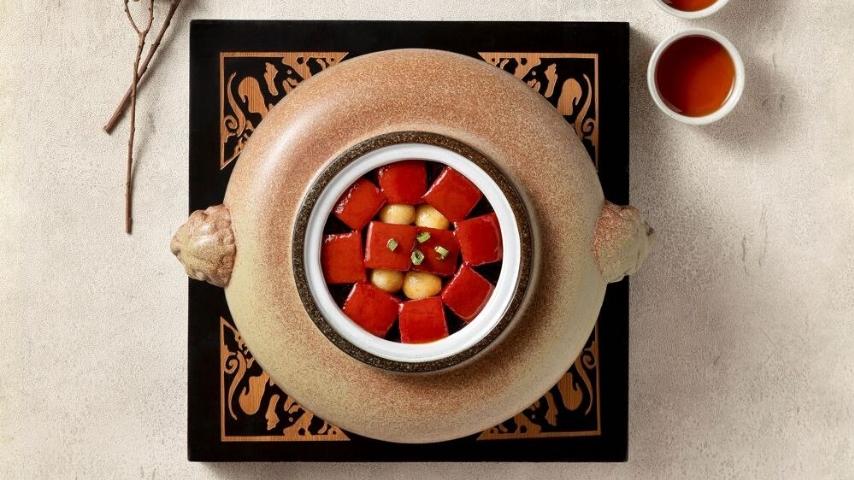Wherever in the world Chinese noodles are found, you will likely see dan dan noodles on the menu. In Hong Kong, you can find the original Sichuan version, as well as the modified recipe. Both of them are popular among diners near and far.

The Birth Story
Dan dan noodles started out as a street food in Sichuan. In its earliest form, it was carried by hawkers on a bamboo pole (dan), from which the name of the dish is derived. The pole was attached to two baskets, one holding the ingredients, the other holding the cookware. It is part of the collective memory of the people of Sichuan, a comfort food that eases their homesickness while being away. Even celebrated writers from Sichuan like Ba Jin and Guo Moruo sought out dan dan noodles the moment they returned to their hometown.
Legend has it that the creator of dan dan noodles was named Chen Baobao. In 1841, he walked from his native village to the town of Zigong. Looking at the many hawkers selling cooked food by the roadside, he decided to sell the noodles he was good at making, carrying everything he needed with a pole on his shoulder. The handmade noodles, which were springy and smooth, were paired with bean sprouts from Sichuan and a rich, tasty soup. The dan dan noodles soon won the hearts and palates of the whole town, which led to Chen opening his own shop.

Chengdu Dan Dan Noodles
Dan dan noodles were later introduced to the city of Chengdu. The hawkers there added minced meat to the plain noodles. They cooked with a pot divided into two segments, one for the broth of chicken or pork, the other for blanching the noodles. The minced meat added fragrance and umami, and the whole dish tasted rich and mildly spicy. Other toppings, like the local chao shou dumpling, were also brought into the mix.
The standard cooking method of Chengdu dan dan noodles is to add bean sprouts, chopped spring onion, chilli oil, soya sauce and meat broth into the bowl. The boiled noodles go in later, followed by minced meat with equal parts of fat and lean meat, fried in advanced with bean sprouts, salt and soya sauce. Another common approach is to eat the noodles “dry”, which means they are complemented by a sauce instead of a broth: the cooked noodles are first shaken to remove all the excess liquid, and then mixed with soya sauce, vinegar and chilli oil. The spicy flavour is one of the defining features of Chengdu dan dan noodles.
The dish later reached the other cities in the province such as Chongqing. The basic ingredients remained the same, barring some subtle adaptations to local tastes. Generally, Sichuan dan dan noodles are cooked with regional ingredients and condiments: Yibin bean sprouts, Baoning vinegar, fermented bean paste from Pixian, chilli and Sichuan pepper. Chilli oil is the most special element. Steeped in canola oil used frequently in the province, the local chilli species erjingtiao and lantern chilli impart the trademark aggressive character to the final product. It takes a lot of preparation work, but there is no parallel to its unique taste.

A New Lease Of Life
Bib Gourmand Sichuan restaurant Wing Lai Yuen played an instrumental role in the noodles’ southward migration to Hong Kong. Its founder, Yeung Din-Wu, was a Yangzhou native and once served the imperial court of the Qing Dynasty. The joint opened in Yuen Leng Village, Diamond Hill, in 1947, and later moved to the squatter area of Tai Hom Village. To comply with the palate of Hong Kong diners, it reduced the spiciness of the dish. Besides that, its noodle maker, Tam Sheung Leung, created a new kind of noodles for the dish, handmade with both soft and hard flours and egg. This modified version proved to be a great success. For an extended period, the restaurant was packed with diners, with more lining up outside. It was seen as a local legend at that time.
In 2001, the demolition of Tai Hom Village forced Wing Lai Yuen to move to Gourmet Place in The Whampoa. Meanwhile, it opened another branch in Wong Tai Sin in Fung Tak Road. In traditional dan dan noodles, there is a layer of spicy red oil on top. The gentler version of Wing Lai Yuen puts a little bit of chilli oil, vinegar, sesame paste and chopped peanuts in the bowl, accompanying a big portion of broth of old chicken and pork bones, simmered for hours until it gets thick and is full of the essence of the meat. The cooked noodles are dropped in at the last minute and the bowl served steaming with the fragrance of sesame.
Wing Lai Yuen also has an item called “special dan dan noodles” on its menu, which comes with minced meat and chopped pickled mustard plant for some crunch. The noodles are made in the way they have been for decades, using two types of flours and egg, mixed and kneaded by hand. Every piece of noodle possesses the aroma of egg and does not stick to the teeth. The dan dan noodles at Wing Lai Yuen ranks among the top dishes ordered by its patrons. Some people even export this Hong Kong-style dish back to Sichuan as well as Japan. This recipe has grown to become the gold standard in Hong Kong, with many stalls and restaurants following Wing Lai Yuen’s method. It proves that, regardless of the origin, a well-made dish will forge a path for itself.
This story is written by Man Wai Leung and translated by Vincent Leung. Click here to read the original article.






















